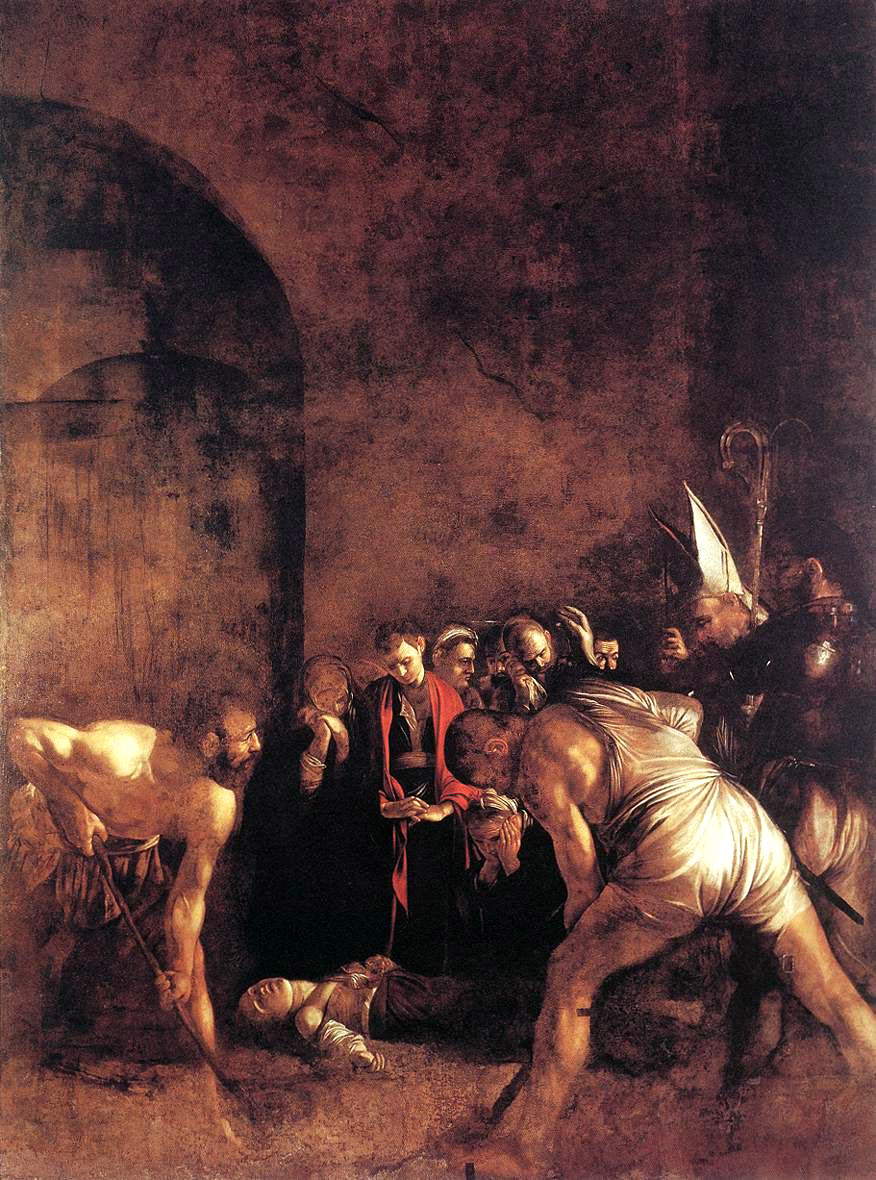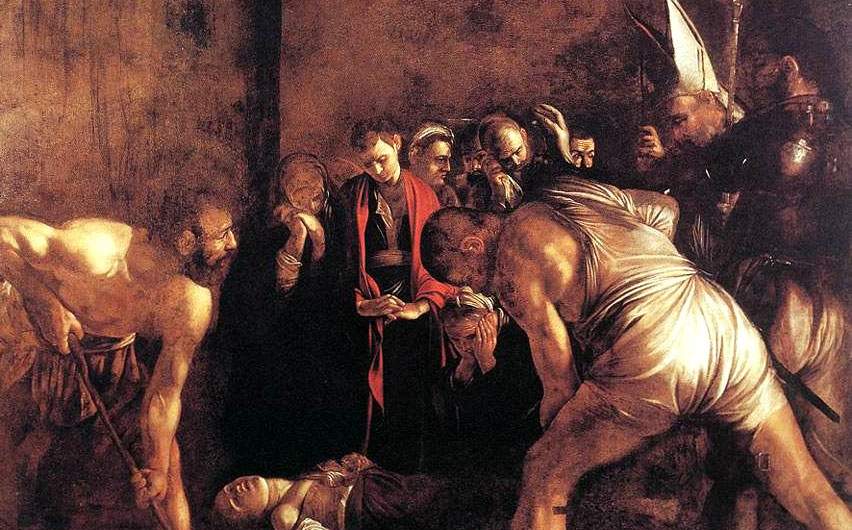More controversy over Syracuse Caravaggio loan to Rovereto exhibition
The controversy surrounding the loan of the Seppellimento di santa Lucia, Caravaggio’s 1608 masterpiece that is scheduled to leave its current home, the church of Santa Lucia alla Badia in Syracuse, in October for an exhibition at the Mart in Rovereto, which in return will ensure the costs of conservation work on the painting(a summary of the operation can be found in this article), has not subsided. In recent days, the “no” front has put forward new arguments in support of the denial: first of all, the lawyer Salvo Salerno, an expert in cultural heritage law, on behalf of the association “Sustainable Ortigia” (which is part of the front of the opponents), intervened in Repubblica to support the thesis that the work is not the property of the Fondo Edifici di Culto (Fec) of the Ministry of the Interior (which would only be the manager), but of the basilica of Santa Lucia al Sepolcro, and consequently the decision on the loan would be up to the Curia.
Salerno, in particular, appeals to a 2017 decision by the Court of Auditors on the management of the Fec. According to Salerno, “with the Lateran Pacts of 1929, the Italian government put an end to the centuries-old dispute with the Vatican with agreements by which the partial restitution of the ecclesiastical patrimony expropriated in the previous century was provided for, with the granting of legal personality to all churches open for worship.” and “in light of the regulations the sole owner of the church and what is contained therein would be the parish of Santa Lucia al Sepolcro and therefore the archdiocese of Syracuse, while the Ministry of the Interior, and for it the FEC, is now the manager of the property but no longer the possessor.”
According to Silvia Mazza, an art historian and journalist responsible for the Mart’s technical coordination of the procedures inherent in the loan and conservation intervention of the work, Salerno “would captiously want to pass off as a judgment or an order” a “deliberation of the Court of Auditors of 2017 that unequivocally clarifies that ’the Central Directorate for the administration of the Fec confirmed that the few operations initiated in the years of the first application of l. No. 222/1985 did not end with the final definitive measure of transfer.”’ “This is basically,” Mazza explains, “an act that confirms the failure to finalize the heritage transfer operations, moreover circumscribed to only two cases in all of Italy, and among them there is certainly not the Caravaggio of Syracuse, not even remotely mentioned in the aforementioned resolution.” According to the art historian, therefore, these are hypotheses on which “it is not worth dwelling,” and that of the No front would be an “effort out of time and purely demagogic.”
 |
| Caravaggio, Burial of Saint Lucy (1608; oil on canvas, 408 x 300 cm; Syracuse, Santa Lucia alla Badia) |
There is then talk of an alleged lack of agreement between the institutions involved in the operation: according to Mazza, the Cultural Heritage Code stipulates that “consultation between entities may be lacking,” but this is not, however, the case with the loan of the Seppellimento di santa Lucia, because, the art historian points out, “interlocutions are in place and will be formalized once the loan is granted.”
The opposition front then raised doubts about the contribution granted by the Mart, which would not be 350,000 euros as previously communicated but 100,000 euros. Mazza, premising that the Mart’s project also and above all has a conservation purpose, stressed that the contribution is intended for “whatever is necessary for the purposes of the interventions deemed appropriate for the protection and enhancement of the work under the coordination of the competent bodies,” and that the figure would therefore include “the costs of the copy, because high-definition scanning has a relevant function from the scientific and conservation point of view, as pointed out in the last Icr report in Rome on July 10.” “The other committed sums of the 350,000 euros,” Mazza adds, “were to be used, as always said, for the climabox planned in 2006 by the Crpr of Palermo, but the orientation of the Roman technicians [of the Central Institute for Restoration, ed.] is now tending to discard this solution in favor of other more up-to-date ones to control the microclimate of the church of Santa Lucia al Sepolcro, where the painting is scheduled to return. We need to define what interventions are needed and the costs. To presume to know this from the beginning would have been a prevarication against the body in charge of protection.”
Finally, there is the change of orientation on the part of the Curia of Syracuse that took place in the aftermath of the handover between the previous and the new bishop: in particular, the bishop’s vicar, Sebastiano Amenta, revised the favorable opinion already expressed by the previous Bishop Pappalardo, stating that the transfer will be possible only in the case of important restoration needs that cannot be carried out on site. The vicar, says Silvia Mazza, “without informing the Superintendence, the only one entitled to express an opinion on matters of protection, states that the conditions indicated in the opinion (which thus cannot even be defined, since the Curia was heard out of institutional courtesy) would be lacking. And it does so on the basis of the provisional ICR report and not the last full-bodied 40-page report in which the Institute documents the ’non-substitutable need to continue the analyses at the ICR laboratories in Rome,’ ready to carry out whatever is necessary. This report, together with the one in which the Crpr in Palermo attests that it does not have the necessary instrumentation, has already been sent by the Superintendent to the Fec, to whom alone it is up to at this point to express an opinion.”
 |
| More controversy over Syracuse Caravaggio loan to Rovereto exhibition |
Warning: the translation into English of the original Italian article was created using automatic tools. We undertake to review all articles, but we do not guarantee the total absence of inaccuracies in the translation due to the program. You can find the original by clicking on the ITA button. If you find any mistake,please contact us.



























